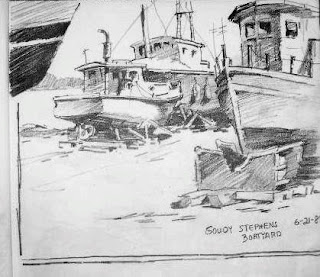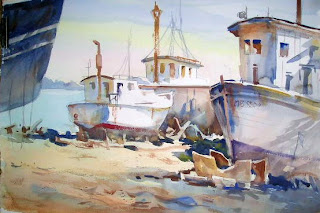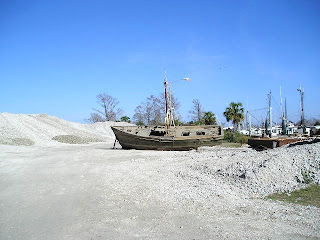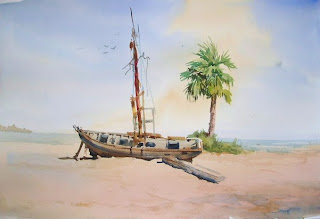

Yesterday I spoke of locating source material to develop into paintings. Here is a sketch I found in one of my many sketchbooks, and the painting that resulted.
To give the feeling of being in the boatyard among the boats, I used boats on either side of the composition as framing devices. The one on the right leads the viewer into the painting, and the hull on the left stops the eye and keeps it on the focal area.
The dark cast shadows under the boats form a broken line which is always more intriguing than an unbroken straight line. Even in such a small shape, I keep in mind interlocking shapes. It has the advantage of implying all sorts of debris without having to detail the interior of the shape.
You may also want to study the many shapes that feature gradation of value and even subtle color changes.























